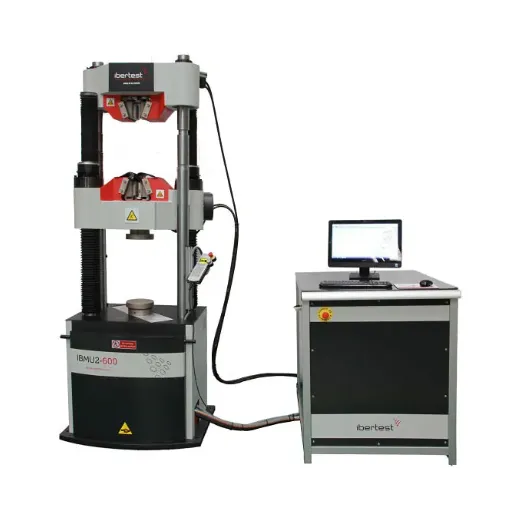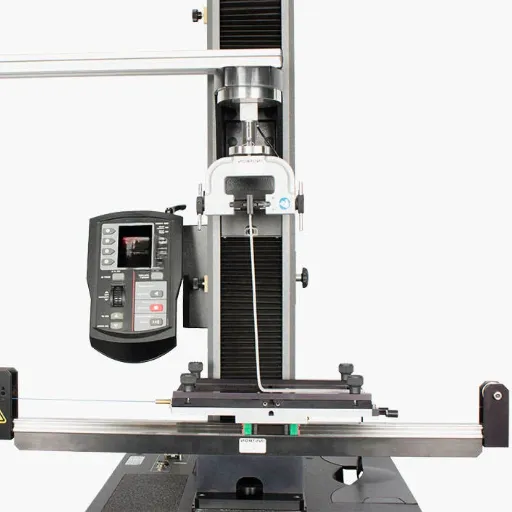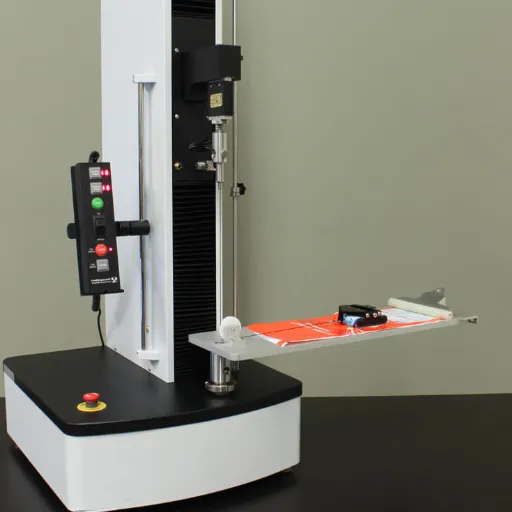In the world of engineering materials, testing must be efficient and precise. Engineers, researchers, and manufacturers must use highly specialized instruments to ensure performance and safety of their products. Among these testing tools is the Hydraulic Universal Testing Machine, considered one of the most adaptable and essential quality assurance and research systems. This article discusses the Universal Testing Systems’ functions and applications to enable testing of materials in different loads and conditions. If you want to explore how this machine works, its relevance in standard aerospace and construction fields, or what major innovations lie ahead, then this brief post lays the foundation. Stay glued as we uncover peculiarities of these systems worth their weight in any modern testing laboratory.
Overview of Universal Testing Machines
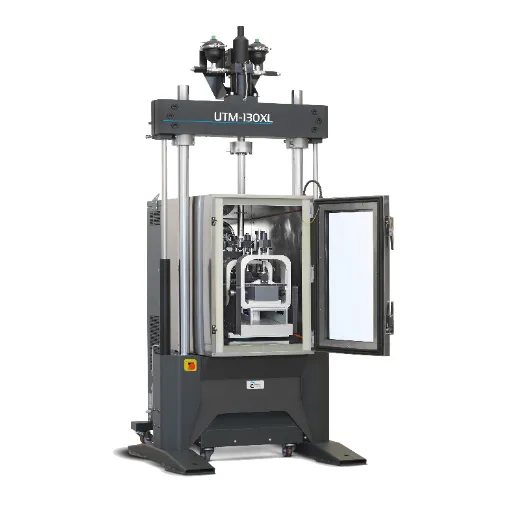
What is a Universal Testing Machine?
Universal Testing Machine (UTM), also called Testing Machine, basically is an equipment used to test material properties under all sorts of loading conditions. It is mostly used for tensile and compressive tests but since it can engineer such as bending, shearing, and hardness tests, it has many versatile uses in several industries.
Basically, the main function of a UTM is to exert forces in a controlled manner onto a specimen and ascertain the strength, deformation behavior, and elasticity attributes thereof. In other words, it details parameters like stress, strain, and breaking loads that are of vital importance in the evaluation of material performances under real-world conditions. So, whether it is for metals, plastics, composites, or even rubber materials, UTMs help in making sure that the materials comply with safety standards and further meet quality requirements.
Such machines in the industry have applications in aerospace, construction, manufacturing, and research, Development of materials, quality assurance, and product safety depend on their ability to provide accurate and timely results. In conclusion, Universal Testing-Machines are still considered fundamental in understanding the properties of materials paving the way for ever-growing engineering advancements and innovations.
Types of Universal Testing Systems
Universal machines can broadly be divided into two types based on their controlling mechanism: hydraulic machines and electromechanical machines.
Hydraulic Testing Systems
Hydraulic systems apply force during testing using hydraulic power. These systems are usually used in testing materials with high load capacity requirements, such as metals and concrete. They are apt for static tests of the tensile, compressive, or bending varieties. Hydraulic UTMs are famed for their durability and larger specimens’ accommodation and thus see widespread use in construction and heavy industries.
Electromechanical Testing Systems
Contrastingly, electromechanical systems use electric motors to create motion and apply force. They are known to be more precise and versatile than hydraulic counterparts. They are better suited for lower load materials like polymers, textiles, and light weight materials. Electromechanical UTMs facilitate a wider range of testing speeds and are often preferred in situations demanding fine control and precision.
Key Point: Each type of system holds its significance across industries, with the choice between hydraulic UTMs and electromechanical UTMs depending on such factors as the load capacity, the type of material to be tested, and the nature of the test itself.
Applications of Universal Testing Machines
Universal Testing Machines (UTMs) span a wide range of industries, testing mechanical properties of materials. The main usage in this regard is in quality control, where items are tested for tensile, compressive, and flexural strength to ensure they meet performance standards before they are used in any sort of product. Therefore, the materials are to be tested for tensile, compressive, and flexural strengths so as to conform to the given performance standards governed by industry regulations.
Another important application is in the research and development field as engineers and scientists study material behavior under varying conditions of loads as a means of designing materials and products. Hence they are largely committed to the study of materials for elastic and plastic deformation, failure points, and later assessments toward durability for long-term use.
Accordingly, UTMs must be considered in construction, aerospace, and automotive industries where material reliability and performance relate to safety and functionality. In the construction sector, UTMs test tensile strength of steel bars while in the aerospace sector, they test composite materials and thereby produce valuable data that help decision-making with regard to material selection and design optimization. Hence, their versatility makes them invaluable in the advancement of material science and engineering.
Hydraulic Universal Testing Machines
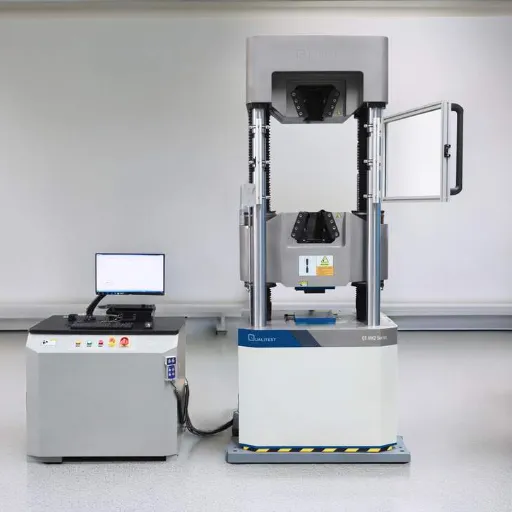
Features of Hydraulic Universal Testing Machines
Hydraulic UTMs are rough and tumble machines that double as complete, multi-functional test systems used for testing a variety of materials for strengths, flexibility, and durability. After all, the very primary features tested by those machines would be tensile and compression, being critical to every material’s behavior under load. They include a high-capacity frame and a hydraulic system through which force can be applied with a very high level of precision to guarantee the repeatability of measurements and the accuracy of tests.
Another major feature would be the versatility of the machine with reference to determining different specimen types and sizes. The hydraulic Universal Testing Machine with its interchangeable grips, fixtures, and accessories can carry out the testing of metals, plastics, rubber, and composites. The versatility of this testing equipment from the manufacturing to aerospace industry ensures that one machinery is used for multiple testing applications. Plus, a lot of modern designs have a software interface that allows real-time data collection and analysis to speed up generation of test reports.
A Hydraulic UTM is considered a testing machine for the heavyweight category. Since these machines can accommodate major forces, they are most suited to heavy-duty materials and components. Mostly, the frame construction consists of a very rigid frame, and a hydraulic system with high precision is installed within this machine, so the diminution of vibration takes place and test integrity is maintained. These qualities obtained earn the discharge of reliability toward the machine, thereby qualifying it as an important cradle for measuring the safety, performance, and quality of materials in diverse industrial settings.
Advantages of Using Hydraulic Systems
Precise Force Control
Universal Testing Machine systems with hydraulics provide fine force control and consistent behaviour during testing, which yields accurate and repeatable values. Very controlled forces or pressures can be applied with great stability, which is vital for conducting viable tests on materials such as metals, plastics, or composites.
High Load Capacity
Loads can be handled efficiently and very heavy ones at that. Since hydraulic systems can deliver huge forces through small-sized machinery, these systems are suited for applications that require high testing capacities. They set forces smoothly and gradually and are thus essential for testing the material behavior under different parameters.
Durability & Low Maintenance
Finally, they are durable when designed and maintained well and require very little maintenance. Due to their sturdy construction and use of long-lasting components, these systems are very reliable even during continuous or intensive operations. This help makes them cost-effective in industrial environments where strategic and consistent test performance is required for the assurance of material quality and safety.
Comparison with Electromechanical Testing Systems
| Aspect | Hydraulic Systems | Electromechanical Systems |
|---|---|---|
| Operation Principle | Uses hydraulic pressure to apply loads | Uses servo motors for mechanical drives |
| Force Capacity | High-force applications, heavy-duty materials | Low force applications with high positional accuracy |
| Material Types | Metals, concrete, high-strength materials | Polymers, textiles, composites |
| Maintenance | Lower costs for high-load applications | Simpler configuration, reduced maintenance |
| Best Use Case | Heavy industries, continuous operations | Light-duty situations requiring precision |
Factors Influencing Universal Testing Machine Price
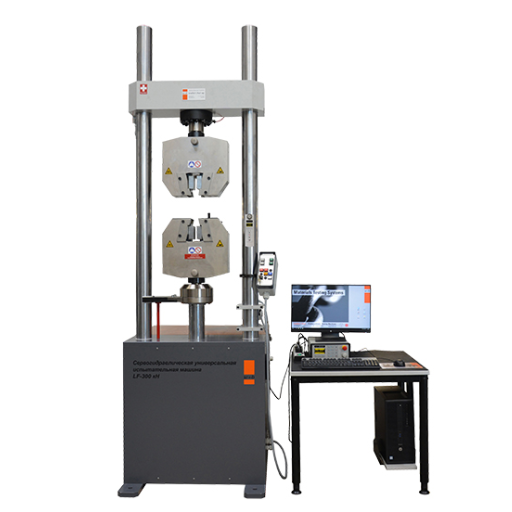
Capacity and Load Ratings (kN)
Capacity and load ratings of a UTM dictate the maximum force it can exert in testing. These are rated in kilonewtons and are crucial parameters for considering the appropriate machine for a given application. Machines having less capacity, commonly from 5-50 kN, are fit for testing smaller, less sturdy materials such as plastics, thin metal sheets, or textiles. In contrast, machines that have larger capacities, i.e., 100-2000 kN, test materials with more strength, such as steel, concrete, or large metal components for heavy industries.
The selection of load rating of the UTM depends on the anticipated strength of the material and the kind of tests that are to be taken under consideration. When the capacity of a machine is on par or slightly less than the maximum strength of the material, the machine can be overloaded and hence damaged with time, thereby hampering its life. In contrast, when the capacity is many times more than necessary, it is an unnecessary added cost. There should be an apt balance between capacity and practical application so that the results will not only be accurate but also cost-effective.
Some other factors that affect the choice of capacity are the standards or regulations to be applied to the material under consideration. Some industries have a restrictive set of guidelines that may require the capacity of a machine to exceed a certain limit. The knowledge of material as well as the environment of testing helps in determining the capacity and load rating choices for a UTM.
Testing Speed and Efficiency
Universal Testing Machines are designed to put to the service of efficient and effective testing in accordance with the needs of different applications. Testing speed is inversely proportional to the time taken for conducting experiments and hence IV is a major point of consideration for industrial and research sectors. Greater modern UTMs permit precise control of speed in a test to have results always precisely the same under test standards. In speed versus accuracy lies the true importance of keeping the results reliable.
Testing efficiency lies in achieving the best output of the machine while maintaining the integrity of the data. Automation, ease of software application, and good calibration systems help speed testing and, at the same time, reduce human error. An efficient and fast UTM shall also save precious time and increase productivity as it can carry out multiple tests in quick succession, especially where high-volume testing is concerned.
In terms of efficiency and speed, one may go for a UTM which will suit best the type of material to be tested. Load capacity of the machine, combined with flexible programming and tolerances to various testing protocols shall be factors to consider. Results of reproducible tests conducted at speeds considered appropriate for the test, and robust machine performance come together to ensure a valid evaluation of the material and hence workable consideration of outcomes.
Software Capabilities and Data Processing
Universal Testing Machines use sophisticated software for enhanced functioning and precision of results. The software controls the testing operations, automates complex processes, and provides utmost measurement accuracy. It allows users to set test parameters, check the progress in real-time, and analyze results. These interfaces tend to be highly user-friendly, thereby eliminating mistakes during test setups or along the testing procedures.
Data processing within the UTM is paramount in providing reliable and repeatable testing results. This software script takes the raw test data, performs necessary calculations via predetermined algorithms, and then outputs final reports. Users find these reports very helpful as they provide the stress-strain curves, strength measurements for tensile, elongation percentages, etc. in a structured representation which facilitates the easy interpretation of any material property for decision-making. Furthermore, the software allows exporting the data into multiple formats so that it can be imported into other analysis programs or databases.
Another benefit presented by the UTM software is its flexibility. Being able to accommodate various testing standards and protocols across industries ensures the relevance of the machine in a variety of applications. Certain software frameworks also provide more advanced functionalities, such as predictions and analytics or comparisons with previous datasets, which make life easier during R&D. With these options, the UTM becomes more than just a superior testing instrument; it comes into full force as a viable answer to challenges encountered in modern-day material evaluation.
Price Ranges and Budget Considerations
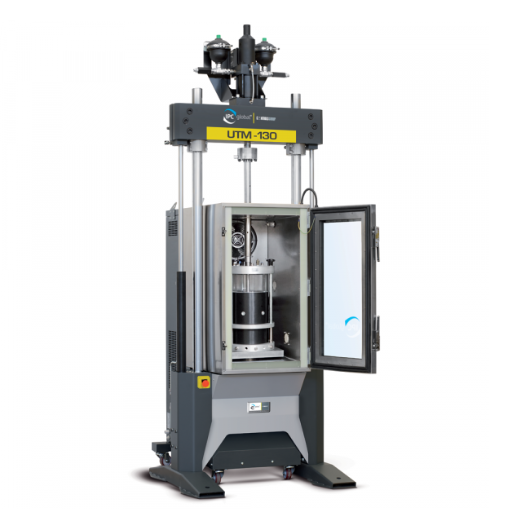
Affordable Entry-Level Models
Affordable entry-level universal testing machines are designed especially for the low-budget market, offering reliable performance for basic material testing. Large majority of these models are designed for ease of use while incorporating fundamental testing capacities including tensile, compressive, and flexural. Hence they provide education with good options for small manufacturers and researching teams that need to carry out routine testing and don’t require advanced or highly technical capabilities.
The price for these entry-level UTMs may very well start from a few thousands, depending on the maximum load capacity and additional features of the machine. Low-cost models generally have low force capacities making them ideal for testing light materials like plastics, textiles, or soft metals. On the other hand, they might not be able to provide prompt customizability and super high precision usually encountered in high-end models. As a result, basic models stay level-headed, budget-friendly solutions to standard testing needs, all the while maintaining a high degree of accuracy and repeatability.
When selecting an affordable UTM, the testing requirements, space availability, and cost of maintenance over time should be placed front and center. Buyers must also confirm that the machine comes with software that is easy to use and installation processes that can be set up quickly. Furthermore, warranty and customer support options from manufacturers are really nice to have. All in all, these are appropriate entry points for anyone seeking to conduct materials testing at an affordable price level while still maintaining emphasis on quality and usability.
Mid-Range Options for Diverse Applications
The mid-range universal testing machines boast improved capacities for more diverse applications across industries. Greater load capacities, precision, and testing capabilities in these machines make them suitable for the organization opting for versatility instead of the highest price bracket. They facilitate testing of tension, compression, bending, and shear of different types of materials, so that diverse testing needs may be fulfilled efficiently.
One prominent feature of mid-range universal testing machines is their adaptability. They are often fitted with modular attachments and interchangeable fixtures that permit the user to somewhat customize the equipment to meet his specific testing requirements. In addition, these machines are equipped with advanced digital control systems alongside the latest software to allow accurate data acquisition and analysis. The operators, therefore, benefit from having highly accurate test procedures, which in turn enhance the evaluation of results in making informed decisions during either R&D or QA processes.
Durability and operability come as the third greatest advantage with mid-range models. Constructed from heavy-duty materials and designed for high-pay uptime, these machines serve very well in manufacturing, construction, and educational setups that insist on dependable results down the line. Investing in them is worthwhile, as these units deliver a flexibly designed package interlaced with reliability and precision, rendering them value-for-money solutions for companies that require a blend of functionality and affordability in material testing.
High-End Machines for Specialized Testing
Universal Testing Machine (UTM) is a multipurpose machine intended for carrying out material testing under different load conditions. Following types of tests can be carried out with this machine: tensile, compression, bending, etc. A UTM helps in carrying out certain standardized measurements regarding strength, elasticity, deformation, and the general behavior of materials and therefore, they are required in construction, manufacturing, aerospace engineering, etc.
Choosing the Right Hydraulic Universal Testing Machine
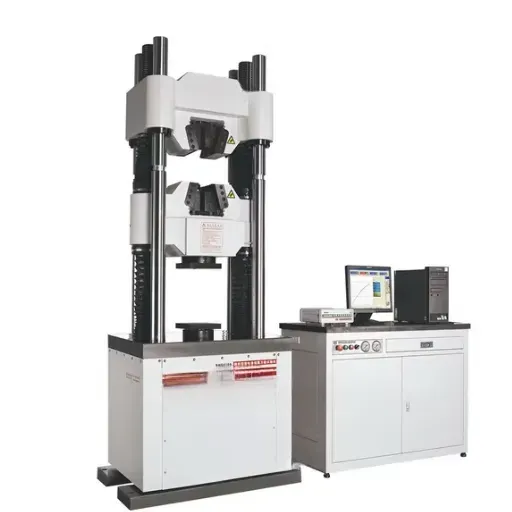
Assessing Application Requirements
Evaluating application requirements forms the first critical step in the purchase of a Hydraulic Universal Testing Machine. The test’s material specifications and test type will largely dictate the choice of the machine to be used. Think of the ultimate strength, size, and ductility of the materials to be tested and of course, the load capacity for testing. Machines come with different load capacities depending on the materials to be tested, so having thorough knowledge regarding the minimum load and maximum load to be applied during your tests shall be very useful.
In addition to this, also think about the kind of testing procedures you would like to perform, whether tensile test, compression test, bending test, or shear test. Different testing methods may require certain arrangements or accessories. It is equally essential to consider the environment in which testing would be carried out. For example, one kind of machine would be suited for laboratory conditions, whereas one meant for industrial floors may be required to have some extra ruggedness to withstand harsher conditions.
Planning for future testing and operational efficiency are other considerations worth making. If your requirements are likely to change, investing in a versatile machine with flexible features may save you a lot of money down the line. User-friendly software, proper program implementation, and software compatibility with data analysis are other features you may want to look for to have the machine working for you in no time. A careful account of these requirements will enable you to choose a testing machine suitable to carry out the work at present and on a downstream basis.
Understanding Industry Standards (ASTM, ISO)
Experimental standards such as ASTM and ISO bear great weight in the reliability and safety of data and in the comparability of results produced by a universal testing machine. These standards provide specifications that detail the methodologies to be followed in performing tests to assess material properties from tensile strength through to compression and flexibility. Complying with these standards implies that your testing machine’s results shall be reproducible and comparable with results from any industry or location.
These ASTM and ISO standards lay down conditions to be followed for various testing scenarios; for instance, ASTM D638 gives the instructions for tensile testing of plastics, whereas ISO 6892 puts forth the schedule for tensile testing of metallic materials. Applying these standards for testing enables manufacturers and researchers to maintain their test results under a truly high level of accuracy and thereby have their results recognized worldwide. Selection of the standard to be used must be carefully examined with regard to the material type and the ultimate intention of the testing prior to commencement of the test.
Observance of these standards helps all along from accuracy to gaining credibility in the industry. Some clients or bodies demand testing accredited to ASTM or ISO. Results generated in absolutely well-calibrated universal testing machines, subjected to testing altogether under these global standards, shall further ensure that these results satisfy professional standards, thereby gaining them the trust of the industry and their reliability.
Evaluating Durability and Precision
Universal testing machines (UTMs), a common name for testing machines, act as the principal tool to measure a material’s properties concerning how the weight or force of bodies interacts within it. These machines measure the response of materials placed in tension, compression, bending, or any other form of stress, with such results being necessary to infer the long-term behavior of materials under certain situations and for compliance with quality and safety standards.
Endurance tests show how materials behave against bearing an application of their use, exposure to the environment, or high stress until breaking. By applying slow loads or cyclic loads, UTMs measure fatigue resistance, maximum load resisted, and the degree of deformation. This information will give consideration to the longevity of materials, and manufacturers can, therefore, make safer products for society with applications they intend to apply.
Precision tests are the response of material forces to the accuracy of those forces applied. A UTM is supposed to give exact measurements so that even small alterations in materials or defects from normal performance can be observed. This type of testing is highly important for industries where tight tolerances exist, such as aerospace, automotive, or medical device manufacturing. The reliable output from a testing machine will assist engineers in choosing suitable materials, thereby enhancing the quality of the final products, as well as the credibility of the industry in general.
Frequently Asked Questions (FAQ)
Q: What defines a hydraulic universal testing machine?
A: It is a type of testing machine used for material testing that works by hydraulic means, and depending on the requirement, it subjects specimens to loads in tensile, compressive, or flexure forces. The machine is designed to test mechanical properties of materials such as tensile strength, compressive strength, or elongation, making it indispensable in quality control in different industries.
Q: How do the two testing machines, electronic versus hydraulic, differ?
A: An electronic universal testing machine generally works by employing electromechanical means for loading, whereas hydraulic forces are applied by the hydraulic testing machine. The electronic version is considered the most precise and offers maximum control over the testing process, while the hydraulic is more suited for large forces and testing of high-strength materials.
Q: What types of materials can be tested in a hydraulic universal machine?
A: A hydraulic universal testing machine can be used for testing metal, plastic, textile, and composite-like materials. It is one of the machines usually used in the aerospace and construction industries for checking the mechanical properties and performance of materials under various loading conditions.
Q: What is the importance of calibration in universal testing?
A: Calibration is very important to assure test accuracy and reliability. It involves making sure that whenever the equipment, such as the load cell or extensometer, is going to provide good and accurate measurements. It is through the periodic calibration that testing will satisfy ASTM and ISO standards-or in other words, the overall testing process will be sound.
Q: How do I choose the right test fixtures for my hydraulic UTM?
A: Test fixture selection for a hydraulic universal testing machine depends upon the nature of the material to be tested and the particular test method being used, i.e., tensile, compression, or bending tests. Properly chosen fixtures are essential for gripping specimens adequately and for accurate test results.
Q: Can a hydraulic universal testing machine perform automated testing?
A: A machine can be equipped for automated testing with hydraulic universal testing machines. The analog-to-automation conversion brings increased efficiency with decreased human error; alongside continuous data acquisition support, an extremely large number of high-strength material tests can be carried out.
Q: What are the advantages of using servo-hydraulic systems in universal testing machines?
A: In a universal testing machine, the servo-hydraulic system provides a lot of advantages like precision control of loading rate and test force, hence the machines are used to test highly strong materials. It performs excellently fast and accurate, far beyond what conventional hydraulic systems have been able to provide, thus giving a higher level of confidence in the test results.
References
- WTS Machinery – Universal Testing Machine Cost: Comprehensive Guide
A breakdown of costs for basic to advanced universal testing machines. - eBay – Universal Testing Machine Listings
Listings for universal testing machines, including prices for various models. - TestResources – Sans Universal Testing Machine
Information on pricing, specifications, and technical details for universal testing machines. - Instron – Universal Testing Systems
A resource for electromechanical and hydraulic universal testing systems, including pricing and features.

